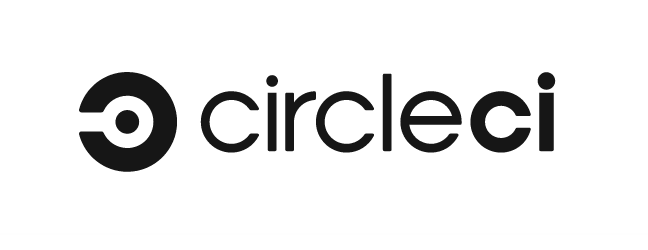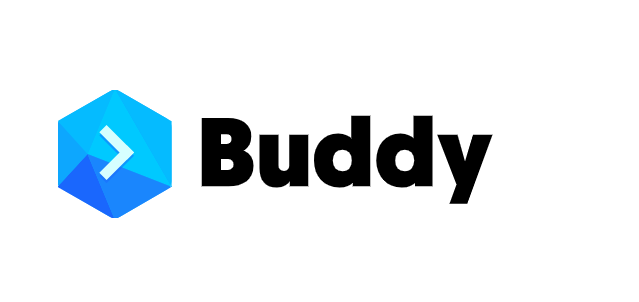
A continuous delivery pipeline can help your business release a continuous stream of software updates into production to compress release cycles, reduce costs, and minimize development risks. This covers new features, setting modifications, issue repairs, and experimentation, among other things.
Ultimately, continuous delivery's objective is to render deployments formulaic. Whether it is a large-scale distributed platform, an advanced production environment, embedded software, or an app, regular operations can be executed on demand.
What Is Continuous Delivery?
Software must be created in a way that it can be supplied in a deployable form at all times. To make this work, development teams perform minor code modifications and check them into a central control repository regularly, typically many times per day, also called continuous integration. Continuous integration tools will then be responsible for consistent check-ins before continuous delivery takes place.
Continuous delivery is a software development process in which code updates are 'continuously' ready for production deployment. A continuous delivery pipeline is a cornerstone of contemporary application development.
It extends on 'continuous delivery' by releasing all code changes to the testing and production environment following the build step. Once properly implemented, developers will always have a deployable production product that has satisfied a standardized testing procedure.
But there's a catch. There is a distinction between continuous delivery vs. deployment. Every code update is created, validated, and then sent to a non-production staging environment with the former.
Before actual production deployment, numerous simultaneous test steps are to be done. It's unlike continuous deployment, which automates production without requiring explicit approval. In a nutshell, a manual authorization to upgrade to production distinguishes continuous delivery from continuous deployment.
What Does the Continuous Delivery Pipeline Enable?
As previously stated, continual supply necessitates some manual intervention. However, a continuous delivery pipeline enables rapid innovation and better services by delivering faster than before. Because it automates the deployment process, enterprises can make improvements and bring new features quicker.
Best Continuous Delivery Software
Companies that use the best continuous delivery tools aim to keep code in a deployable condition at all times so that updates, changes, and new releases may go live at any time with predictable effects. Thus, consider our top 5 and how each software can meet your business's demands at scale.
#1 Codemagic
Codemagic is CI/CD for mobile apps with a completely hosted and managed service. With this continuous delivery software, you can utilize your choice framework and automate the full build, test, and release workflow using configuration as code with codemagic.yaml file. With years of expertise and 3M+ successful builds, Codemagic promises to bring improvement to continuous delivery software.
Two main benefits of Codemagic are faster build machines and the price. Codemagic has Apple M1 machines available to everybody which makes building a lot faster. They recently decreased pricing and capped their pay-as-you-go plan which means that you will never have to pay more than $299/month and get to use unlimited build minutes.
Codemagic was the first CI/CD tool that gave users the opportunity to use Apple M1 machines which is a huge upgrade. The benchmarks can be found here. .

Codemagic can automatically publish your app with each build or on terms that are convenient for you, allowing you to create mobile apps at record speed and bring them to market faster. See how this CI for mobile apps can satisfy your ever-changing needs with their key features:
Key Features
Automatic build triggers: Run builds on terms that work best for you. Codemagic supports webhooks from all Git providers to automatically trigger builds on push, pull request, or tag creation.
Testing and code analysis: Run automated tests and code analysis to detect issues early and deliver your end users a seamless experience.
Build for all platforms: Codemagic provides macOS, Linux, and Windows machines so that you can build your app for iOS, Android, Web, or desktop.
Simplify your code signing setup: Manage your code signing files in Codemagic and effortlessly create a signed .aab, .apk or .ipa archive for on-device testing or release.
Publishing and notifications: Automate the entire app distribution process with Codemagic and get notifications to your preffered channel.
Azure DevOps, GitHub, GitLab, Bitbucket, and other self-hosted or cloud-based Git repositories are all supported by Codemagic CI/CD. You may use it to create mobile apps on standard or premium instances of macOS, Linux, and Windows build machines. Using automated testing, you can guarantee the quality of your apps.
As part of your continuous integration and delivery pipeline, you may run unit tests or test your apps on simulators, emulators, or actual devices using its continuous delivery pipeline. You may also use build notifications to get quick feedback on your builds or clear logs and remote access to the build machine, making debugging simple. Another plus would be Codemagic's integration with workspaces such as Slack.
Benefits
Customizable workflows with third-party integrations: Have complete control over your CI/CD pipeline with routines tailored to your development team's needs, whether you're developing a native/cross-platform app or working on white-label apps with unique processes. You can also interconnect your pipeline with third-party services for a streamlined workflow.
M1 macOS VMs for faster builds: all Codemagic users can use Apple M1 machines by default. These machines are significantly faster compared to other instance types that Codemagic and other providers offer. All Codemagic users (paid or free plan) can use Apple M1 machines which makes building significantly faster.
Up to date with developer tools: Codemagic CI/CD is always ready to provide you with the most up-to-date technologies for developing mobile apps. To support both Android and iOS apps, Codemagic builds run on macOS workstations that have multiple Xcode versions, Android SDK, and other preloaded tools. Android builds can also run on powerful Linux machines.
Price: Codemagic is cheaper than other CI/CD providers. With their Pay-as-you-go plan, you'll pay only for what you use and never more than $299/month (unless you need four or more concurrent builds). If you need more concurrencies, then the total cost of the service is $100/mon or $1000/year for each concurrency.
First-class support: You can get fast help from Codemagic's support engineers via in-app chat and GitHub Discussions.
No matter what sort of app you have in mind, its CI/CD tools' ever-expanding range of sample projects and clear and concise documentation make it easy to get started. Learn how to get started with Codemagic, and check out discounted pricing plans you can opt for!
#2 Bitrise
Bitrise's mobile-first DevOps platform allows you to speed up mobile builds, releases, and teams. You can automatically establish simple procedures to get your iOS, Android, React Native, macOS, and Flutter apps integrated and deployed rapidly. Allow Bitrise to handle stack and technology changes such as new Xcode versions, the shift to Apple silicon, and other tasks.

Access automation workflows to execute them when and how you want them, allowing you to chain together typical actions like deploying to testers, notifying the company Slack about a new version, or incrementing a version number.
Analyze Bitrise Insights to see how your operations work over time. You may connect to GitHub, GitHub Enterprise, GitLab, GitLab Enterprise, and Bitbucket both in the cloud and on-premise, and select from over 300 connectors that link processes to your toolset across the board.
Above all, Bitrise is cloud-based and completely managed. Its data centers have hardware maintained by a staff devoted to assuring the greatest possible performance for your processes, whether they operate on Linux, Intel-based macOS, or Apple's new silicon-based iOS development infrastructure.
Key Features and Benefits
Also offers continuous Integration tools that can detect breaking changes
Build securely to guarantee all work and sensitive info are handled well
Lets you create workflows for any scenario
Bitrise CLI allows you to run your builds locally on Bitrise
Mobile DevOps to let you release software updates with confidence
Visualize build and test performance
#3 Jenkins
Jenkins is a renowned open-source automation server that offers hundreds of plugins to help create, deploy, and automate any project. Being an adaptable automation server, Jenkins can be utilized as a simple CI server or as the continuous delivery center for any project.

Built for beginners, Jenkins is a Java-based application ready to be used immediately, with packages for Windows, Linux, macOS, and other Unix-like operating systems. Its online interface, which incorporates on-the-fly fault diagnostics and built-in assistance, makes it simple to set up and configure.
You may distribute work over numerous computers using its continuous delivery pipelines, allowing you to accelerate builds, tests, and deploys across different platforms.
Thanks to hundreds of plugins in the Update Center, Jenkins connects with virtually every utility in the continuous integration and delivery toolchain. With this, Jenkins can be expanded via its plugin architecture, opening up practically limitless possibilities for what Jenkins can achieve.
Regarding security, the Jenkins project is a CVE Numbers Authority that publishes CVE metadata alongside security warnings. This enables automated security tools to locate susceptible installations.
Key Features and Benefits
Offers both continuous delivery and integration tools
Easy to set up and configure
Distributed across multiple machines
Compatible with hundreds of plugins
#4 CircleCI
Your CI/CD process is the life force of your engineering or development team. That's why your teams are never restricted in their capacity to develop and innovate while using CircleCI. Their professionals are there to help you every step of the way.

CircleCI stands for change validation at every stage. You can regain control of your code and control all sources of change. It guarantees that you can provide updates just when your clients need them and that they will always function. You may code in any language and a variety of execution settings.
They can create, test, and deploy it if you can write it. Your continuous delivery pipelines never restrict the possibilities of what you can provide with flexible settings and hundreds of pre-built connectors.
This software is the only FedRAMP-certified and SOC 2 Type II compliant CI/CD platform. Audit logs, OpenID Connect, third-party secrets management, and LDAP are all built-in capabilities that allow total control over your code. CircleCI makes it simple to integrate all your favorite tools to develop exactly as you want. You can use the API or select from hundreds of bundles of configurable settings to bring in your desired integrations.
Key Features and Benefits
Unmatched security features
Extensive CI/CD capacities
Usable API for your preferred integrations
Get premium support from seasoned DevOps professionals
#5 Buddy
Buddy is the most straightforward approach to including CI/CD into your delivery process. With over 120 ready-to-use actions, you can create continuous delivery pipelines in visual UI. Export the pipeline settings to YAML or script the full procedure from start to finish. Pipelines may be performed on push, manually, or using Slack commands and webhooks.

Buddy's major component is a project. It consists of two primary components: a Git repository and a collection of pipelines that define when and how the repository's source code will be processed.
This means how they will be compiled, tested, readied for deployment, and sent to a specified server. When you initially log onto Buddy, you can instantly create a new project and connect it to the Git repository you want to automate (GitHub or BitBucket) or push your Git repository to Buddy.
Buddy's continuous delivery pipeline creates an app with each push to the master branch, uploads it to the server, and resumes it. The user should be told instantly if any of these operations fail, such as a failed upload. All you have to do with Buddy is add a notification action in the On failure area, where you may select the suitable option, such as e-mail, SMS, or Slack.
Key Features and Benefits
87% faster CI/CD adoption
12 seconds of average deployment time
Employs modern features for a smoother work routine
5 times better in laying out lower rate deployment
Delivers instant results
To sum it up, continuous delivery enables your team to continuously build, test, and prepare code changes for production release, making software delivery convenient and speedy.
These techniques, enabled by our top 5 best continuous delivery platforms, pushes your team to be more productive by relieving developers of manual work and promoting habits that decrease the number of mistakes and problems released to consumers.
When continuous delivery is effectively done, using tools like Codemagic and Bitrise will always produce a deployment-ready build product that has gone through a consistent testing procedure to ensure quality assurance.
ⓒ 2025 TECHTIMES.com All rights reserved. Do not reproduce without permission.




